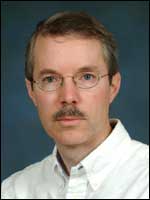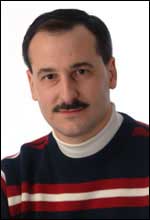Brian Sadler; Army Research Laboratory
Richard Kozick; Bucknell University
Monday Afternoon, May 17, 13:30 - 16:30, Location: Duluth
Sensor networks have rapidly emerged as an important new discipline for military and commercial applications. The communications load in the network is highly dependent on the distributed signal processing strategy that is used for detection and estimation tasks, and decoupled design of the signal processing algorithms and communication network protocols may be drastically inefficient from a communications bandwidth perspective. This is especially important in energy-constrained networks, where minimal communications is a desirable goal, in order to preserve node lifetime. Thus, the key to energy-constrained network design is to employ a cross-layer design approach, spanning sensing, signal processing, and communications.
In this tutorial, we describe the research and design issues in energy-constrained sensor networks. This touches on many aspects of communications and network topology, and we include a DoD perspective on current and future applications. As a specific application, we focus on lessons learned employing aeroacoustic sensors for detection, localization, identification, and tracking of acoustic sources such as vehicles. The network performance is strongly impacted by aeroacoustic propagation. Employing statistical models for the turbulent atmosphere, we predict signal processing performance as a function of acoustic frequency, range, loudness, and atmospheric conditions. Our study includes the impact and exploitation of acoustic Doppler shifts, a theory of distributed array processing with spatial coherence loss, and experimental results. This leads to signal processing schemes that maintain nearly globally optimal performance, with significantly reduced communications load.

Brian M. Sadler is a senior research scientist at the Army Research Laboratory (ARL) in Adelphi, MD, and lectures at Johns Hopkins University in signal processing and communications. He was an Associate Editor for the IEEE Transactions on Signal Processing, is on the editorial board for the EURASIP Journal on Wireless Communications and Networking, is a guest editor for the IEEE Journal on Selected Areas in Communications (issue on Advances in Wireless Military Communications), and is a member of the IEEE Technical Committee on Signal Processing for Communications. He organized and co-chaired the 2nd IEEE Workshop on Signal Processing Advances in Wireless Communications (SPAWC-99). His research interests include sensor signal processing and networking, as well as signal processing for mobile wireless and ultra-wideband systems, and he supports several DARPA programs in these areas.

Richard J. Kozick received the B.S. degree from Bucknell University in 1986, the M.S. degree from Stanford University in 1988, and the Ph.D. degree from the University of Pennsylvania in 1992, all in electrical engineering. From 1986 to 1989 and from 1992 to 1993 he was a Member of Technical Staff at AT&T Bell Laboratories. Since 1993, he has been with the Electrical Engineering Department at Bucknell University, where he is currently an Associate Professor. His research interests are in the areas of statistical signal processing, communications, and sensor networking. He serves on the editorial board of the Journal of the Franklin Institute. Dr. Kozick received the Presidential Award for Teaching Excellence from Bucknell University in 1999. He is a member of the IEEE, ASEE, Tau Beta Pi, and Sigma Xi.
Home -||-
Organizing Committee -||-
Technical Committee -||-
Technical Program -||-
Plenaries
Paper Submission -||-
Special Sessions -||-
ITT -||-
Paper Review -||-
Exhibits -||-
Tutorials
Information -||-
Registration -||-
Travel Insurance -||-
Housing -||-
Workshops